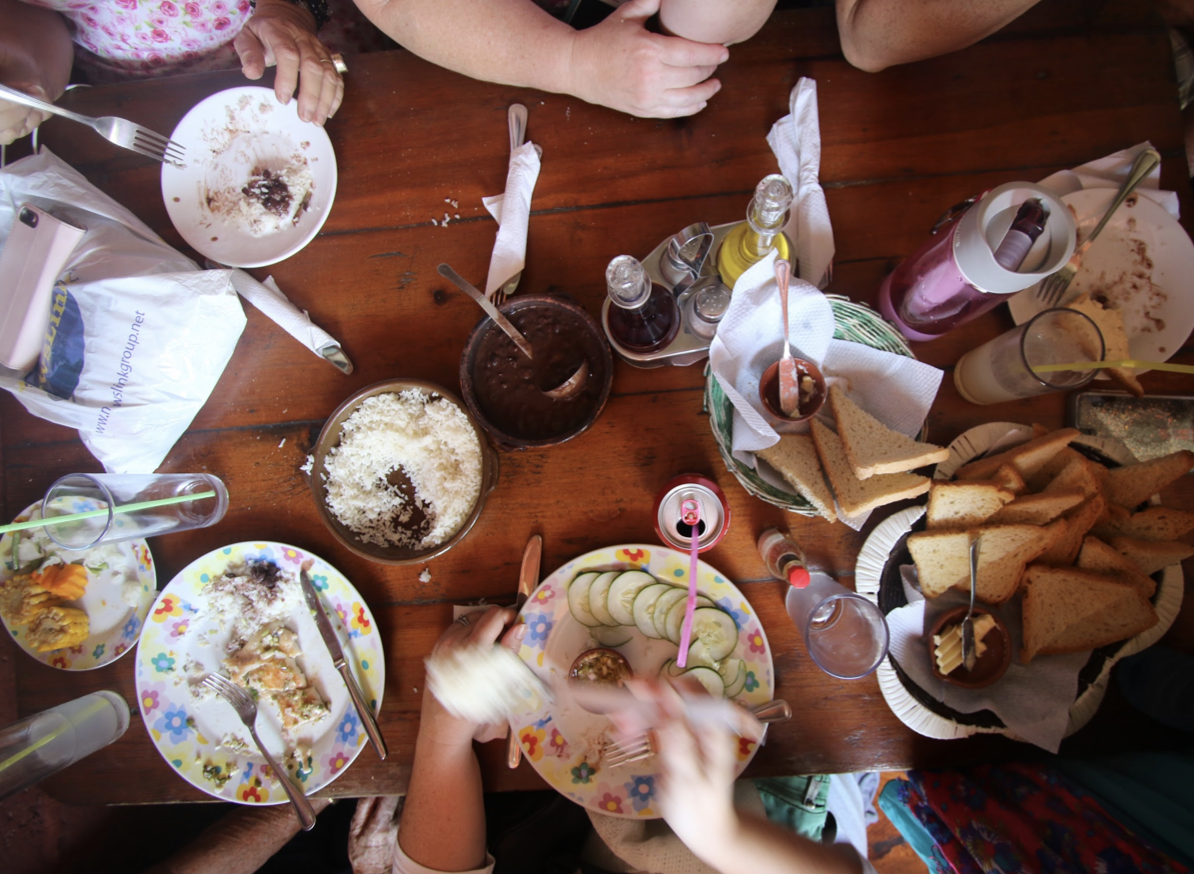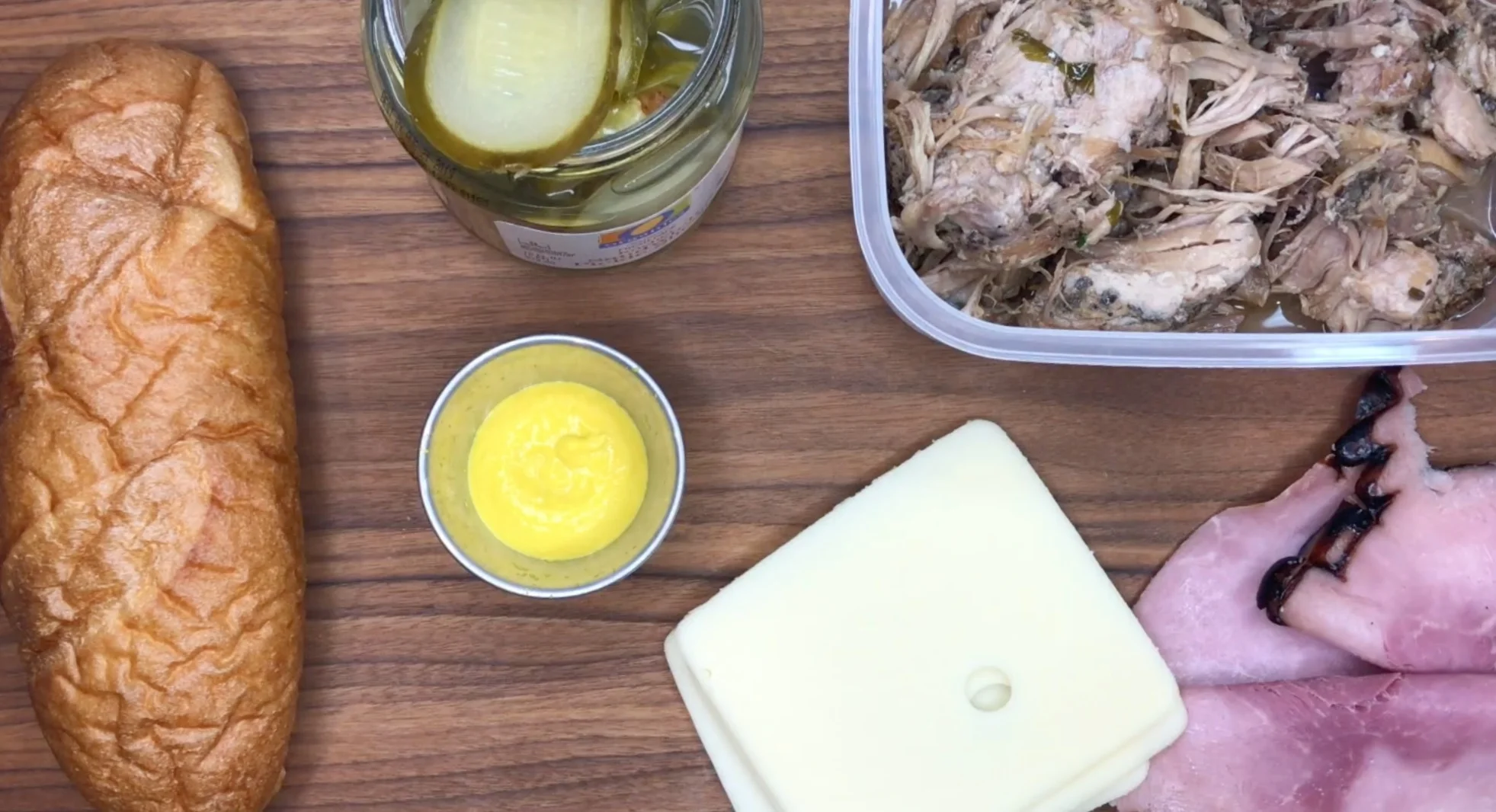They say that Cuba wears its history on its sleeve. And if history is the outerwear, the cuisine of Cuba is the heart and soul. A blend of Native American Taino (indigenous peoples of Cuba) food, Spanish, African, and Caribbean cuisines, Cuban food is not spicy, but it is filling and flavorful. Unlike most dinners that are served over the course of several dishes in turn, traditional Cuban meals are served with all items at once.
A typical morning in Cuba starts with Cafe con Leche, a strong, sweet coffee with milk, or a colada, the same strong, sweet coffee without milk. Your typical afternoon, post-meal beverage, and welcoming drink upon entering someone’s home is also coffee. Cuban coffee differs though in its serving size and the sweetness that comes from whipping sugar until it melts into a foam on top of the espresso. Cuban coffee is as much a social lubricant to Cubans as a cheap happy hour is to Americans. This high-octane experience cannot be missed, literally. Chances are any trip to Cuba will result in high quality caffeine addiction. Trust us, it’s so worth it.
The dominant flavors in this cuisine are a mixture of garlic, cumin, oregano, and bay leaves. Rice and beans are a staple at most every meal. Often paired with a seasoned and simmered meat, like Ropa Vieja, or fish, like Pescao en Escabeche, Cuban food is organic and fresh thanks to small, local supply chains. Fried plantains are often served with meals for a crunchy kick. The staples of the island in combination remind the palate of an earthy, humble existence where family and friendships are the most important of all.
When dining in Cuba, you may find that your restaurant is actually the back of someone’s house. Because of tough economic times, the development of sprawling infrastructure still has not come to the island. Almost as if trapped in time, old cars and older buildings are typical features on the tropical landscape. Tourists have a chance to step back into a world with a simpler focus on human connection through food, games like chess, and dancing.
An evening of dancing in Cuba isn’t complete without a mojito or two to cool off. This classic cocktail conjures up magical feelings to all who drink it. Its name comes from the root word mojo, which means ‘to place a little spell.’ Surely, there is nothing better to quench your thirst and keep you coming back for more -- dancing that is!
And when the night is all said and done, we highly recommend getting the Cuban Sandwich’s late-night cousin, the Medianoche. Made with the same ingredients as a Cuban sandwich but on a softer roll, there’s nothing else like it to curb those late night cravings. We can’t wait for you to try it for yourself!
Makes 6 sandwiches
For the pork:
2 teaspoons kosher salt
1 teaspoon garlic powder
1/2 teaspoon ground cumin
1/4 teaspoon freshly ground black pepper
1 boneless pork loin (about 1 pound, 5 ounces)
2 tablespoons olive oil
For the sandwiches:
6 medianoche, brioche, hoagie, or soft sandwich rolls
2 tablespoons yellow mustard
8 ounces thinly sliced Swiss cheese
9 ounces sliced dill pickles
12 ounces thinly sliced deli ham
4 tablespoons butter, at room temperature
Cook the pork:
Arrange rack in the middle of the oven and heat to 400°F.
Combine the salt, garlic powder, cumin, and pepper in a small bowl. Sprinkle all over the pork. Heat the oil in a large oven-safe skillet on medium-high heat until shimmering. Add the pork loin and sear on all 4 sides until golden-brown, 2 to 3 minutes per side.
Transfer the skillet to the oven and roast until the internal temperature registers 155°F, 30 to 40 minutes. Set aside to cool completely, about 45 minutes. Cut crosswise into 1/8-inch-thick slices, or as thin as possible.
Make the sandwiches:
Heat a large cast iron skillet on medium-high heat. Meanwhile, assemble the sandwiches.
Split the buns in half, making sure to not cut the whole way through. Spread the mustard on the cut side of the top halves of the buns. Top the mustard with the Swiss cheese, pickles, and ham. Divide the pork among the bottom buns. Close the buns and spread the butter on the outsides of the buns, spreading on both top and bottom.
The stovetop method:
Place the sandwiches in the heated cast iron skillet, working in batches if needed. Weigh down the sandwiches with an aluminum foil-wrapped brick, or top with another cast iron skillet weighed down with a heavy can. Cook undisturbed until golden-brown on the bottom, 3 to 5 minutes. Flip the sandwiches and cook until the second side is browned, 3 to 5 minutes more.
Cut the sandwiches on the diagonal and serve.
























In the middle of the Caribbean, Cuba is one of the most beautiful islands in this archipelago. The Island of Cuba is characterized by unique landscapes and a privileged climate all year round. In addition, Cuban architecture has had a very particular stamp, always authentic and legitimate.